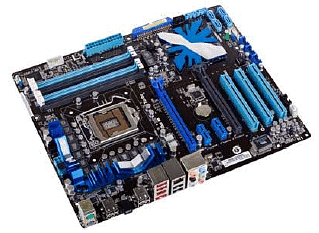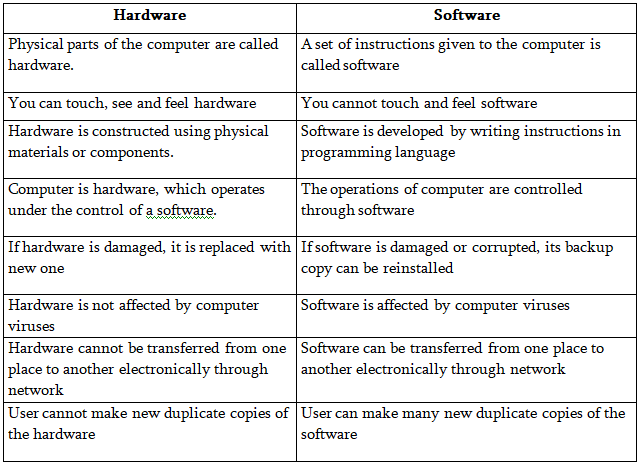Hardware & Software | IBPS PO Prelims & Mains Preparation - Bank Exams PDF Download
Hardware
Computer hardware is the collection of physical parts of a computer system. This includes the computer case, monitor, keyboard, and mouse. It also includes all the parts inside the computer case, such as the hard disk drive, motherboard, video card, and many others.
Motherboard:

The motherboard serves as a single platform to connect all of the parts of a computer together. It connects the CPU, memory, hard drives, optical drives, video card, sound card, and other ports and expansion cards directly or via cables. It can be considered as the backbone of a computer.
Software
Software is a set of instructions, data or programs used to operate computers and execute specific tasks. Opposite of hardware, which describes the physical aspects of a computer, software is a generic term used to refer to applications, scripts and programs that run on a device.
Software is of two types: System software and Application software.
1. System Software
System software is the main software that runs the computer. When you turn on the computer it activates the hardware and controls and coordinates their functioning. The application programs are also controlled by system software. It is also known as background software.
Four types of system software are the following.
- Operating System
- Utility Programs
- Device drivers
- Language translators
Operating System- Operating system (OS) is the program that acts as an interface between the user and computer hardware and application software. After the boot program, OS manages all the other programs in a computer. Examples - Linux, Unix, Microsoft Windows XP etc.
Utility Programs- Utility Programs help to manage, maintain and control computer resources. They are also known as service programs. Examples of utility programs are antivirus software, backup software, disk defragment, backup, disk clean etc.
Device Drivers- A device driver is designed to enable interaction with hardware devices. It controls a device that is attached to your computer. Printers, Displays, CDROM readers, Disk drives etc. are the examples of the device driver.
Language Translator– Language Translator translates the high-level language program (input) into an equivalent machine language program (output). It also detects and reports the error during translation. Assembler , Compiler, Interpreter are types of a Language Translator.
Assembler– It converts assembly language program into machine language.
Compiler– It converts the program in a high-level language into low-level language and reports all the errors of the program along with the line numbers. C, C++ use compilers. Interpreter – It converts the programs in a high-level language to low-level language. It translates line by line and reports the error once after completing the translation process. It gives better error diagnostics than a compiler. Python, BASIC, and Ruby use interpreters.
2. Application Software
Applications software is a set of programs designed to perform a specific task. It does not control or coordinate the working of computer. A computer can run without application software. Application software can be easily installed or uninstalled as required.
Microsoft Office Suite, Adobe Photoshop and any other software like payroll software or income tax software are application software.

|
647 videos|1019 docs|305 tests
|
















